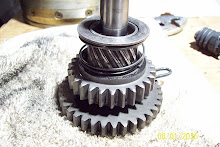With all the concern about saving energy, let's touch on fueling your gas-powered machinery.
Selecting the proper fuel grade
When your vehicle was in the design stage, some engineer put alot of thought into how it was going to perform. Things like compression, engine temperature, horsepower, and other engineering aspects were taken into consideration. While this process took place, a particular type of fuel was decided on for maximum power, economy, and longetivity. What was chosen is limited to one of the types of fuel you find at the pump when your tank is getting low and you head to the station nearby. What you typically find are black hoses with their snouts nestled in next to labels marked '87', '89', '93' and so on. These are different grades of fuel as can be easily spotted by the differences in price. Don't be fooled and say to yourself, "I'll just buy the cheaper stuff and save some money. My vehicle doesn't care." Nay my friend, but your engine DOES care! The lower the price doesn't mean the lower the quality, those numbers have to do with what temperature the gas burns. You as a caring operator must check your owners manual and see what type fuel the guy in the lab coat designed your engine to burn. If you are using the incorrect grade, it may seem like you're saving money on a fill-up, but you are costing yourself more in the long run with premature engine wear and DECREASED fuel mileage. I tried this myself some time ago and found a tank full(15 gallons) of cheaper grade was only 15 cents less than 91+ octane that the manufacturer called for, factoring in I only got 19 miles per gallon out of 87 octane and 21mpg with the 91. Read the owner's manual and save yourself some money. And yes, the emissions will be worse with the incorrect fuel choice.
A little care goes a long way
Another point to ponder, is there anything else needed besides putting the right fuel in the tank? Yes! I say. Consider your tank as any other metal container. When temperatures change, expansion and contraction takes place, drawing in and venting outside air. Along with that air comes moisture which is not good for your tanks' interior, as it can cause rust. Also, with freezing temperatures the moisture will condensate and become ice, which can block the fuel system and stop your engine cold.(pun intended) What to do you say? There are two things that come immediately to mind. First, try to keep your tank full as the smaller air space leaves less room for venting moisture-laden air and prevents moisture from collecting on the inside surfaces. Second, go to the local auto parts store and buy some 'dry gas' or other fuel system additive that removes moisture and follow the directions. A small investment a couple times a year will save alot of headaches 'down the road'.(ha ha, sorry)
Subscribe to:
Post Comments (Atom)

No comments:
Post a Comment